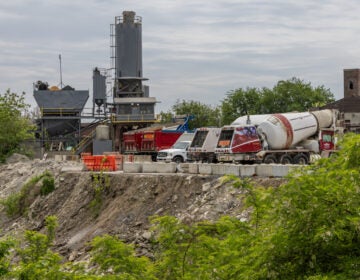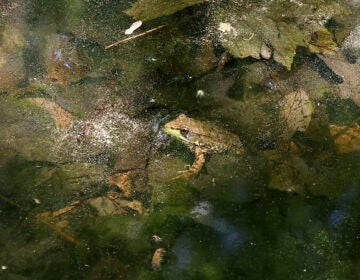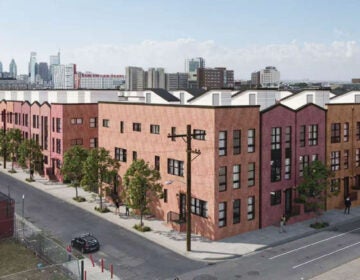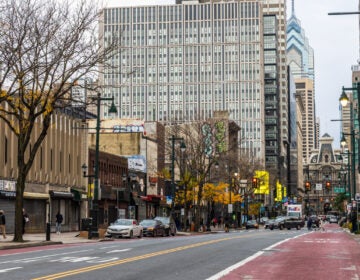Cleanup of former oil terminal near Bartram’s Garden gets boost with EPA funds
The site is one of close to 200 nationwide receiving cleanup funds from the Bipartisan Infrastructure Law.
Listen 1:06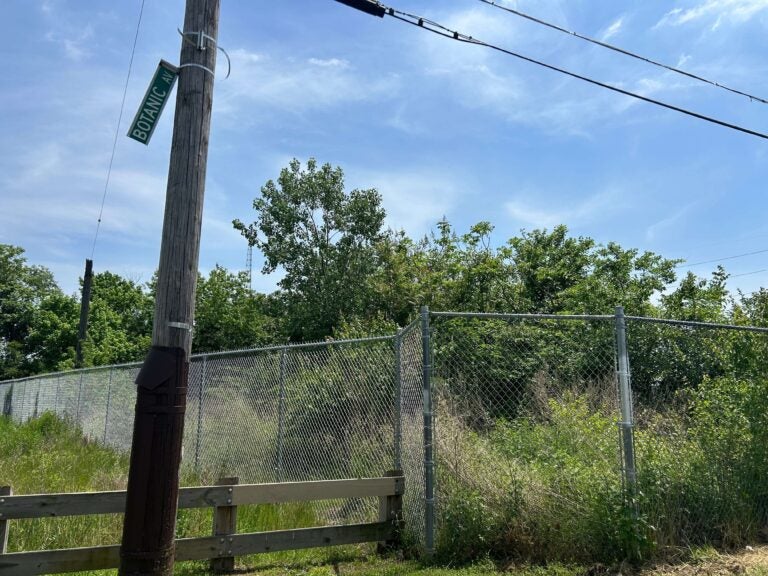
The site of the former 49th Street Terminal along the Schuylkill River in Southwest Philadelphia will be cleaned up using a federal brownfield grant. (Sophia Schmidt/WHYY)
Have a question about Philly’s neighborhoods or the systems that shape them? PlanPhilly reporters want to hear from you! Ask us a question or send us a story idea you think we should cover.
A chain link fence surrounds a tangle of green brush where oil tanks once stood at the site of the shuttered 49th Street Terminal along the Schuylkill River in Southwest Philadelphia.
Local economic development officials have big plans for the vacant site. But first, they need to clean up the contamination left behind from its industrial past.
This week, their efforts got a boost as federal officials announced more than $300 million to remediate dozens of brownfield sites across the country, including the one in Southwest Philly.
“Former industrial sites like this can leave a legacy of toxic pollution and destruction in our communities, harming our environment, affecting our health and causing economic stagnation and instability for generations,” EPA Administrator Michael Regan said at an event announcing the funding in Southwest Philly Monday.
The 49th Street Terminal site, owned by the Philadelphia Authority for Industrial Development and located near the Philadelphia Housing Authority’s Bartram Village development, is part of the PIDC’s proposed Lower Schuylkill Biotech Campus — a 40-acre district to the north and south of Bartram’s Garden where planners envision several large buildings housing cell and gene therapy production.
The Bartram’s Mile trail, part of the Schuylkill River Trail that runs through Bartram’s Garden and south along the river, would also extend north through the former 49th Street Terminal site.
“We have been working long and hard to realize this vision of a riverfront that is accessible again to the residents of this community,” said Bartram’s Garden director, Maitreyi Roy.
PIDC received $2 million to clean up the 49th Street Terminal site, which is contaminated with lead and semi-volatile organic compounds.
The new federal funding comes mostly from the Bipartisan Infrastructure Law and is distributed in around 200 communities nationwide. It includes new money for site assessment, cleanup and redevelopment, as well as supplemental funding and technical assistance for communities already remediating brownfield sites.
Other funded regional cleanups include several in Pennsylvania and New Jersey, such as the former West Jersey Paper Manufacturing Site in Camden and the former Easton Iron & Metal property in Easton, Pa., which once housed a lime-making kiln and auto scrapyard. The Downtown Dover Partnership in Delaware also received funding.
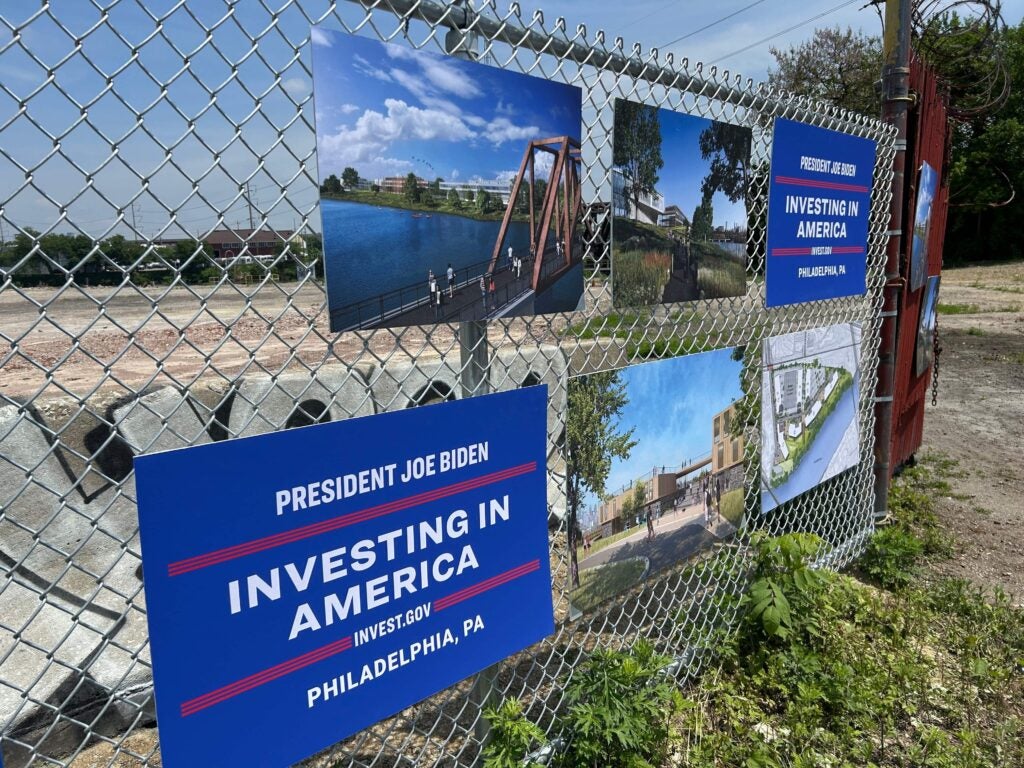
EPA officials say the additional investment will help fuel job growth and economic development, plus protect the health of residents near polluted sites.
“Hundreds of thousands of these potentially dangerous sites across the country just sit idly by, jeopardizing the health and the economic security of local communities, many of which are low-income communities and communities of color,” Regan said.
The grants are part of the Biden Administration’s Justice40 initiative and are focused on disadvantaged and overburdened communities.
Mayor Cherelle Parker praised the investment as an example of intergovernmental cooperation.
“Together, we can make Philadelphia the safest, cleanest and greenest big city in the nation with access to economic opportunity for all,” she said at Monday’s event. “We’ve gotten one step further today.”
Communities will begin to receive the cleanup funding as early as October, Regan said.

Subscribe to PlanPhilly
WHYY is your source for fact-based, in-depth journalism and information. As a nonprofit organization, we rely on financial support from readers like you. Please give today.




